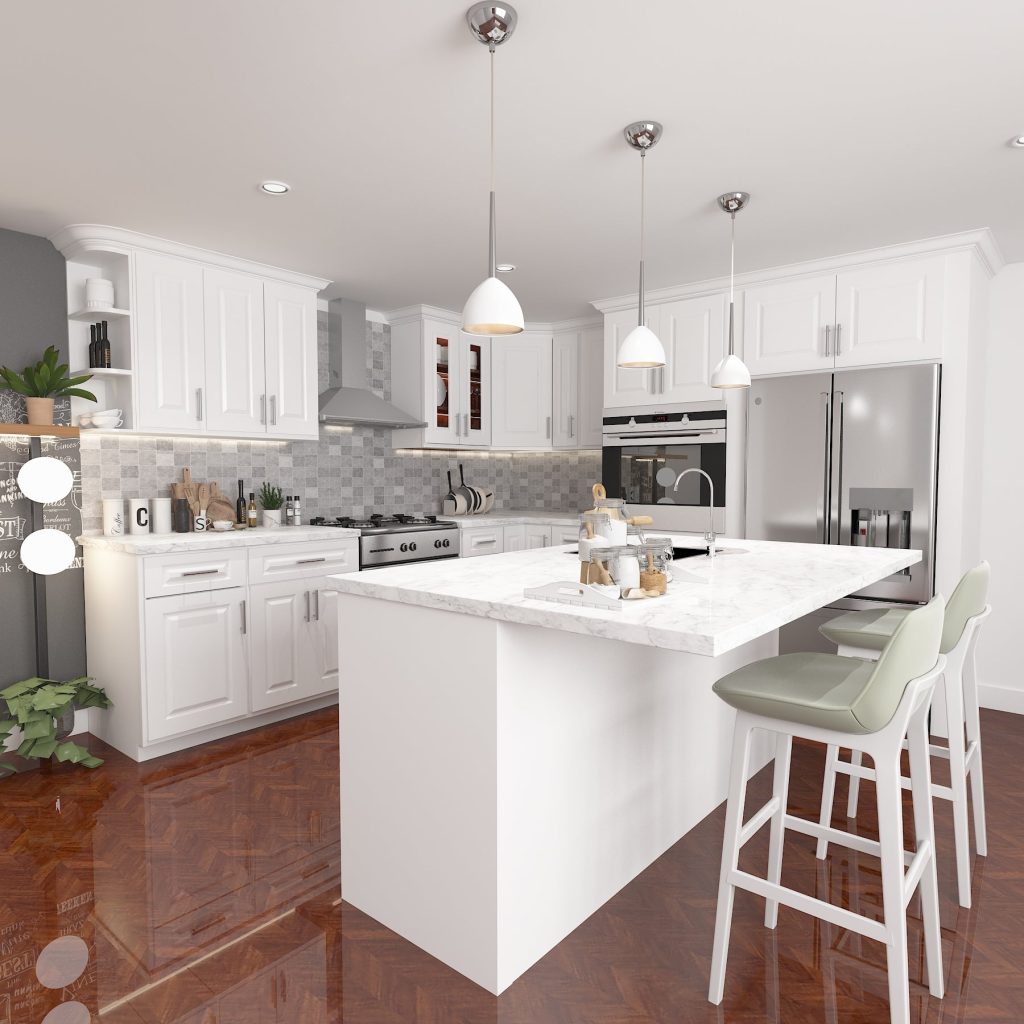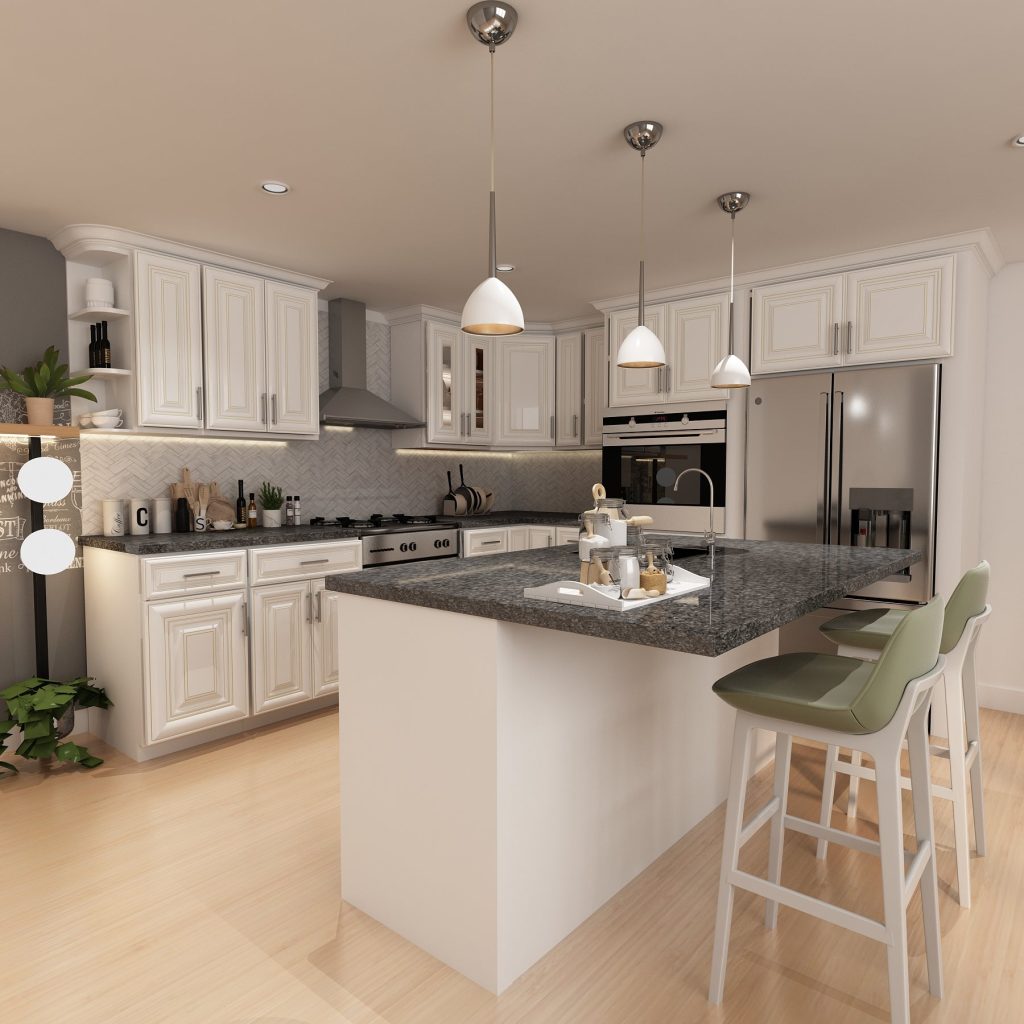When it comes to kitchen cabinet layouts, the layout of the cabinets plays a crucial role in the overall functionality and aesthetics of the space. A well-designed kitchen cabinet layout not only optimizes storage and organization but also enhances the visual appeal of the kitchen. Whether you are renovating an existing kitchen or designing a new one, it is important to carefully plan and consider the layout of the kitchen cabinets.

In this article, we will discuss the different aspects of designing kitchen cabinet layouts, from space planning and storage solutions to style and material choices. By the end of this article, you will have a better understanding of how to create a functional and visually appealing kitchen cabinet layout.
Space Planning
The first step in designing a kitchen cabinet layout is to carefully consider the available space and how it will be used. This includes taking into account the dimensions and layout of the kitchen, as well as the placement of other fixtures such as appliances and countertops. It is important to create a layout that maximizes efficiency while also allowing for smooth traffic flow within the kitchen.
One popular approach to space planning is the “kitchen work triangle” concept, which involves positioning the refrigerator, stove, and sink in a triangular layout. This allows for easy movement between the three key work areas and is a basic principle in kitchen design. When planning the cabinet layout, it is essential to ensure that the work triangle is not disrupted and that there is ample space for accessing and using the cabinets and appliances.
Storage Solutions
Another important aspect of designing kitchen cabinet layouts is to provide adequate storage solutions for all the kitchen essentials. This includes considering the types of cabinets, drawers, and shelving that will best suit the needs of the household. For example, deep drawers are ideal for storing pots and pans, while pull-out shelves are great for organizing pantry items. It is also important to consider the inclusion of specialized storage solutions such as spice racks, tray dividers, and lazy Susans to maximize organization and functionality.
In addition to the type of storage
It is also important to think about the placement of the cabinets and drawers. For example, placing the pots and pans near the stove and the utensils near the food prep area can make cooking and meal preparation much more efficient. Consider the needs of the household and plan the storage solutions accordingly to ensure that everything has a place and can be easily accessed when needed.
Style and Material Choices
In addition to the functional aspects of kitchen cabinet layouts, it is also important to consider the style and material choices that will complement the overall design of the kitchen. The style of the cabinets can greatly influence the aesthetic appeal of the space, whether it is a traditional, contemporary, or transitional design. It is important to choose a style that reflects the homeowner’s taste and complements the rest of the kitchen’s design elements.

When it comes to material choices
There are a variety of options to consider, from wood and laminate to metal and glass. Each material has its own unique characteristics in terms of durability, maintenance, and visual appeal. It is important to choose a material that not only looks great but also suits the lifestyle and needs of the household. For example, if the kitchen is a high-traffic area, it may be wise to choose a durable and easy-to-clean material such as laminate or metal.
How to clean kitchen cabinet
Keeping the kitchen cabinets clean is an essential part of maintaining a hygienic and organized kitchen. Over time, kitchen cabinets can accumulate dirt, grease, and food residue, which can make them look dull and unattractive. Regular cleaning of kitchen cabinets not only improves their appearance but also extends their lifespan.
General Cleaning Tips
Before delving into the specific cleaning methods for different types of kitchen cabinets, it’s important to keep a few general tips in mind. Here are some essential tips to follow when cleaning kitchen cabinets:
- Use the right cleaning products: Different types of kitchen cabinets require different cleaning products. Always check the manufacturer’s recommendations for the most suitable cleaning products to use.
- Test in an inconspicuous area: Before applying any cleaning solution to the entire surface of the cabinets, it’s important to test it in an inconspicuous area to ensure that it does not damage or discolor the finish.
-
Use gentle tools: When cleaning kitchen cabinets, opt for soft, non-abrasive cleaning tools such as microfiber cloths, sponges, and soft-bristled brushes to avoid scratching the surface.
Now, let’s take a look at the specific cleaning methods for different types of kitchen cabinets.
Wooden Cabinets
Wooden kitchen cabinets require special care to ensure that they maintain their natural beauty and luster. Here’s how to clean wooden cabinets effectively:
- Remove surface dust and debris: Start by removing any surface dust and debris using a dry microfiber cloth or a soft-bristled brush. This step will prevent the dirt from spreading when you apply a cleaning solution.
- Use a mild cleaning solution: Mix a solution of warm water and mild dish soap. Dip a clean microfiber cloth into the solution and wring out the excess water. Gently wipe down the wooden cabinets, paying attention to any areas with built-up grease or grime.
- Rinse with clean water: Once you’ve wiped down the cabinets with the cleaning solution, use a separate cloth and clean water to rinse off any soapy residue.

Laminate Cabinets
Laminate cabinets are known for their durability and easy maintenance. Here’s how to clean laminate cabinets effectively:
- Wipe with a mild cleaning solution: Mix a solution of warm water and a mild all-purpose cleaner. Dip a sponge or microfiber cloth into the solution and use it to wipe down the laminate cabinets, paying special attention to any sticky or greasy spots.
- Use a degreaser for tough stains: If there are stubborn grease stains on the laminate cabinets, use a degreaser specifically designed for laminate surfaces. Follow the manufacturer’s instructions for application and cleaning.
- Rinse and dry: After wiping down the cabinets with the cleaning solution, use a clean, damp cloth to rinse off any residue. Then, use a dry microfiber cloth to dry the cabinets thoroughly.
Metal Cabinets
Metal kitchen cabinets are durable and easy to clean. Here’s an effective method for cleaning metal cabinets:
Use a gentle cleaning solution:
Mix a solution of warm water and mild dish soap. Dip a sponge or microfiber cloth into the solution and use it to wipe down the metal cabinets, paying attention to any areas with fingerprints or grease marks.
Use a metal polish:
For stainless steel cabinets, you can use a specialized metal polish to restore the shine and remove any stubborn stains. Follow the manufacturer’s instructions for application and cleaning.
Rinse and dry:
After wiping down the cabinets with the cleaning solution or metal polish, use a clean, damp cloth to rinse off any residue. Then, use a dry microfiber cloth to dry the cabinets thoroughly.

Conclusion
Designing kitchen cabinet layouts requires careful planning and consideration of various factors, including space planning, storage solutions, and style and material choices. By taking the time to carefully plan and design the layout of the kitchen cabinets, it is possible to create a functional and visually appealing space that enhances the overall kitchen design. Whether you are renovating an existing kitchen or designing a new one, it is important to prioritize the layout of the cabinets to ensure a successful and satisfying result. With the right approach and attention to detail, you can create a kitchen cabinet layout that optimizes storage and organization while also enhancing the style and functionality of the space.
